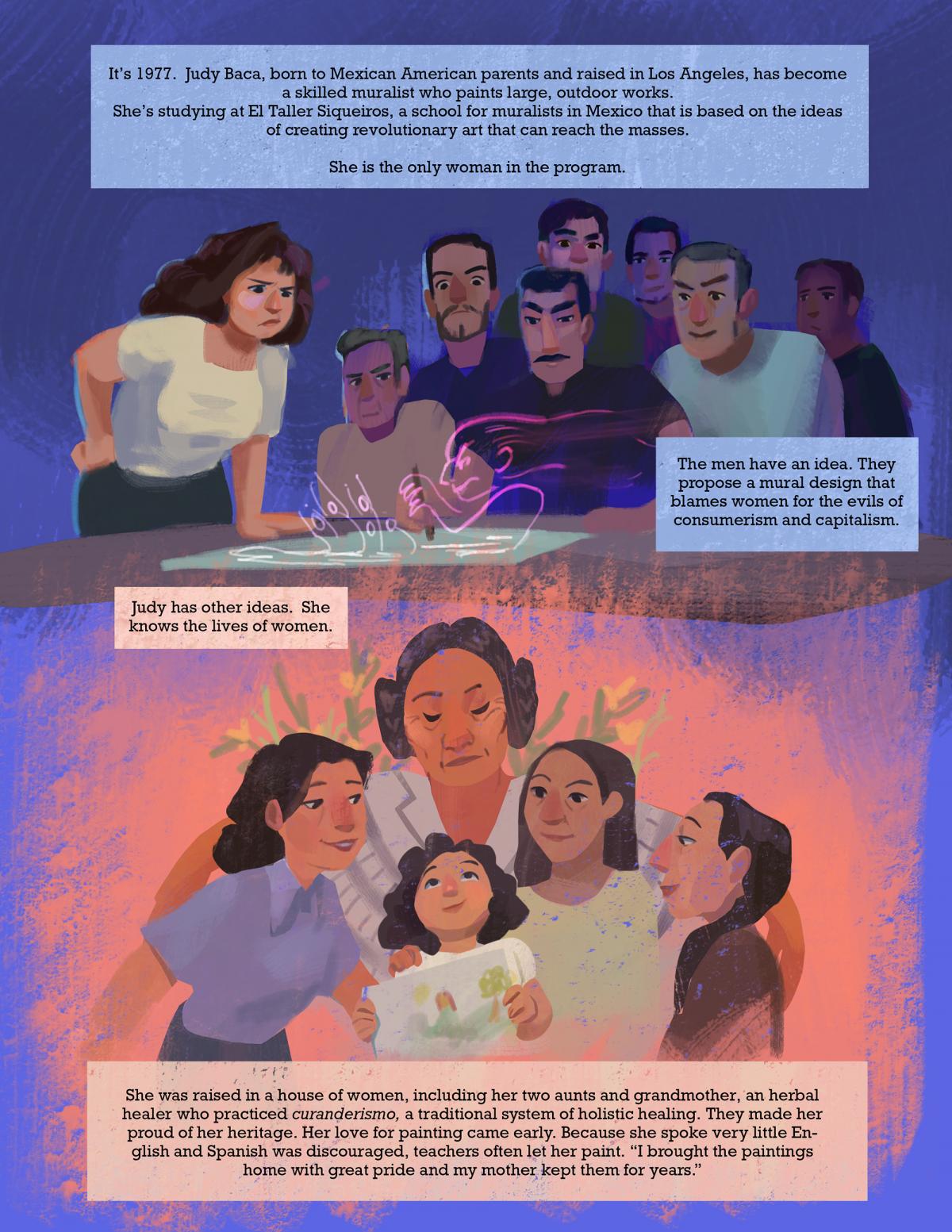
Born to Mexican American parents and raised in a house of women, Judy Baca was brought up in the Watts neighborhood of Los Angeles, proud of her heritage. In her murals and other artworks, she tells stories of underrepresented communities, giving voice to women, the working poor, LGBTQ+, people of color, and immigrants.
We chose to celebrate Judy Baca in the Drawn to Art comic series for her incredible talent and for her fierce advocacy. In 2019, SAAM acquired her mural, Uprising of the Mujeres, painted in the late 1970s.
The cover of the comic, "Judy Baca: The Big Picture," features the artist standing proudly with her hands crossed, wearing white overalls bearing touches of spattered paint. In the waning daylight of a California afternoon, her mural, The Great Wall of Los Angeles, comes to life. You can see young people helping to paint the mural, some on the ground working with long brushes, while others do their work on scaffolding. The finished mural spans more than three thousand feet and tells the stories of marginalized and underrepresented communities.
The pastel colors are a highlight for me as they create an evocative environment that quickly changes as we get into the comic and move from California to Mexico. Here, illustrator Elisia Fernandez, a student at the Ringling College of Art and Design, does a wonderful job in telling the story of the creation of the mural, Uprising of the Mujeres, when Judy was the only woman in the workshop. The time is 1977, and the men’s ideas do not mesh with Judy’s. She advocated for a woman’s point of view. The illustrations here and on the following page show us Judy’s intelligence, strength, persistence, and artistic talents that she uses in the cause of furthering social justice.
I really can’t get enough of this comic, how it tells an important story, with each page its own vivid palette that creates the most wonderful setting for the words. We end up back in Los Angeles, with Judy working with gang members from East LA who begin to refer to her as “the mural lady.” The comic vividly captures the artist’s singular vision and all the community members who brought that vision to life.
The last page is a full color rendering of a section of The Great Wall, done in the wonderful pinks and peaches and yellows that Elisia handles so masterfully. It’s my favorite page in the comic in its simple, heartfelt beauty, containing only a short quote from Judy Baca herself, “Murals sing gospel from our streets, preach to us about who we can be, what we fear, and to what we can aspire.” To me, this comic sings beautifully as well.
Read more about Judy Baca’s inspiration and process behind her mural Uprising of the Mujeres.
This comic is part of a series Drawn to Art: Tales of Inspiring Women Artists that illuminates the stories of women artists in the collection of the Smithsonian American Art Museum. Inspired by graphic novels, these short takes on artists’ lives were each drawn by a student-illustrator from the Ringling College of Art and Design.
We invite you to read the comic and share with your friends and young people in your life.



















